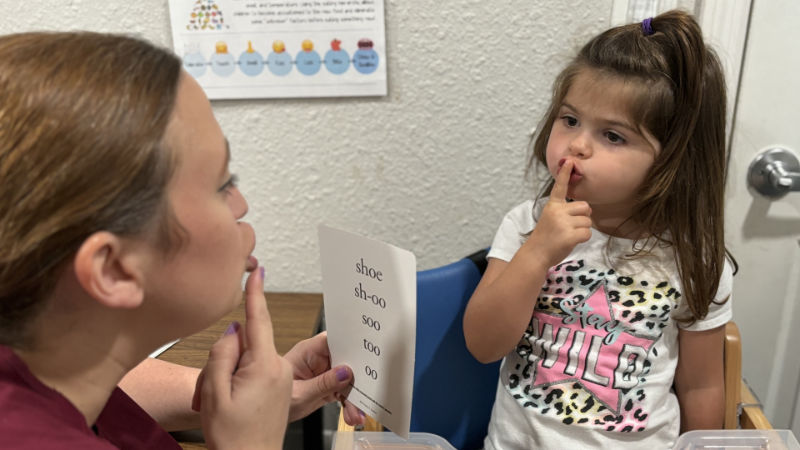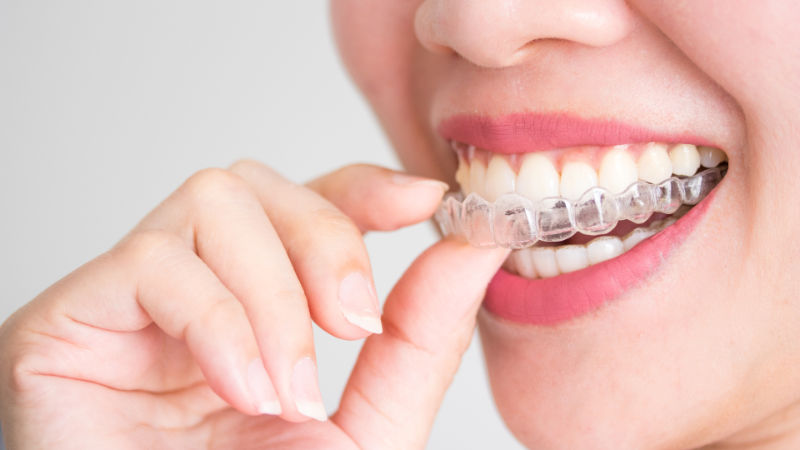Speech Therapy
You can’t understand your child
Like our mission statement says, we want to find out “the why” your child is having such a difficult time with making these sounds? If we don’t rule out all the possible causes, then we are just treating the symptoms but not the root cause. This will lead to years of unsuccessful speech therapy. There are several reasons this could be happening including: adenoid/tonsils, prolonged pacifier use, prolonged bottle use, thumb sucking, fluid in their ears, hearing loss, tethered oral tissues, or phonological processing. We will do a thorough exam with referrals to any other medical professionals needed. After that, we use several different therapeutic tools to help your child make those age appropriate sounds so they can be understood and frustrations at home can be relieved. Rarely, do children have speech sound disorders without an underlying cause. Orofacial Myofunctional Therapy is very helpful in treating speech sound disorders.

Your child has been in speech therapy for years but not making progress?
Has your child been in speech therapy for a long time without noticeable progress? In our experience, children who’ve been in traditional speech therapy for over six months without significant improvement might benefit from Orofacial Myofunctional Therapy (OMT). While practicing speech sounds is important, underlying structural issues like tongue ties, muscle weakness, high narrow palates, or low tongue resting positions can hinder progress. These issues often require specialized treatment. If your child has been in speech therapy for more than 6 months without the expected results, we encourage you to consider a consultation with our team. We can assess whether OMT might be the missing piece in your child’s speech development journey.
Your toddler is not talking yet?
You are not alone. Over 50% of our new evaluations are children under 3 years old who are not talking with no known medical conditions. At Bayside we have a 9 week program called “Tiny Talkers” that will guide you as parents to encourage communication at home. The program comes with weekly goals, video tutorials, and of course one on one coaching with a speech and language pathologist. For these little ones, we should be able to teach you as parents all the strategies by the end of the program so you can spend more time enjoying their company than in the therapy clinic. These littles need more exposure to other children, play outside, and create meaningful connections than they need to come into a therapy center. The toddler age goes by fast, enjoy them. By the age of three we should know more about your child and what they may need.

Our Speech Generating Device AAC Evaluation Program
We will do a thorough evaluation of your child and determine the best alternative way for them to communicate. It is important to note that research has proven that using a SGD only encourages speech production. It is giving a child an auditory model of the word they want to say each time they press the button, and also decreases the frustration allowing talking to be less stressful. After four weeks, we will collaboratively decide on what works best for your and your child. If a speech generating device is needed, we take a break until the device is approved through insurance and shipped to your house! We then will do 4 weeks of training to help the child, caregiver, and any other important people in the child’s lives including ABA, nannies, teachers, and teacher aids.
When Children Repeat
Does your child:
- Start talking later than peers?
- Often repeat phrases from movies or shows?
- Respond to questions by repeating them?
If so, they might be a gestalt language processor. This means they learn language differently from most children. Typical language development usually progresses from single words to short phrases, and then to longer sentences. But gestalt processors hear language in chunks. Their “first word” might actually be a whole phrase like “More please?”
These children need a different approach to language learning. We start by understanding their “gestalts” – the chunks of language they use. Then, we help break these down into individual words. This allows them to learn how to build their own unique sentences with correct grammar.
It’s important to note that this isn’t a “wrong” way of learning language – it’s just different. While many gestalt language processors are on the autism spectrum, not all are. Understanding this learning style is key to helping these children develop strong language skills. If this sounds like your child, we can help guide you through the best strategies to support their unique language journey.


Adult Lisps and other sound distortions
While most childhood speech issues resolve naturally, some can persist into adulthood. If you’re still struggling with a lisp or difficulty pronouncing the ‘r’ sound, you’re not alone. These particular speech patterns often don’t disappear on their own.
Why does this matter? Your speech can influence how others perceive you, potentially affecting job interviews, career advancement, and social interactions. It’s not fair, but it’s a reality many adults face.
The good news? It’s never too late to address these issues. If you’ve been told “that’s just how you talk” or “you’ll grow out of it,” but haven’t, there might be an underlying cause we can help with. Many adults find success with Orofacial Myofunctional Therapy (OMT). This approach addresses the root causes of persistent speech challenges, often leading to significant improvements.
